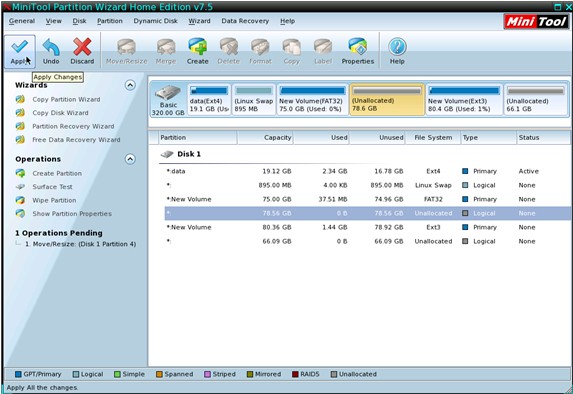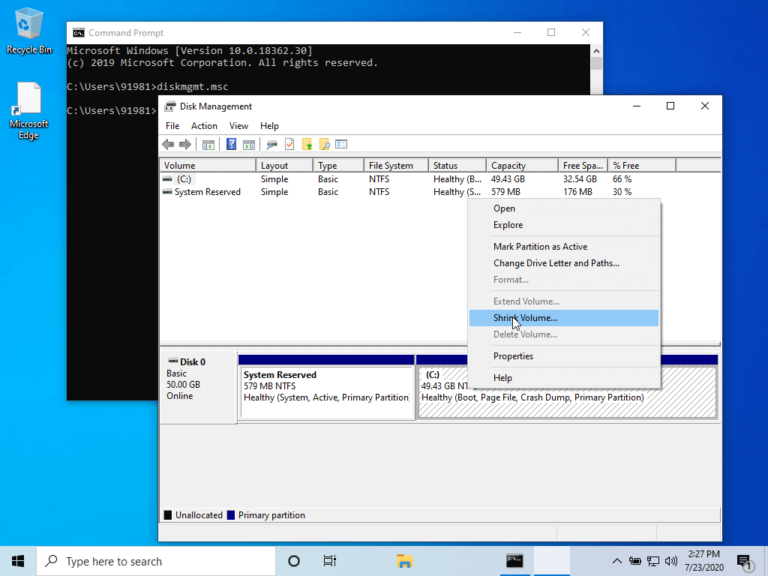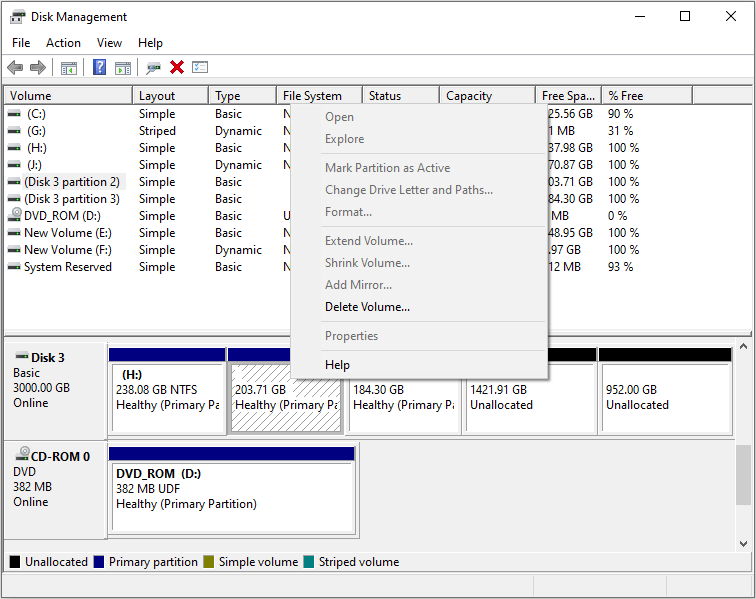

Ubuntu volume manager free#
It is better to allocate only what you think you will need, and leave the rest of the space free for future use. Usually people allocate the entire drive to one partition when they first install, but since extending a partition is so easy with LVM, there is no reason to do this. With LVM you can create as many Logical Volumes as you wish, and it is usually quite easy since you usually have plenty of free space left. With conventional msdos partitions, this becomes problematic due to its limitations. If you like to test various Linux distributions, or just different version of Ubuntu, or both, you can quickly end up with quite a few partitions. You can migrate the system to the new disk while using it, and then remove the old one later. Another reason you might want to move is to replace an old disk with a new, larger one. When I got my SSD drive, I simply plugged it in, booted it up, and asked lvm to move my running root filesystem to the new drive in the background while I continued working.

In the event that your system crashes or loses power during the move, you can simply restart it after rebooting and it will finish normally. If you do, unlike gparted, LVM can move a partition while it is in use, and will not corrupt your data if it is interrupted. Moving partitions with gparted is usually only necessary in the first place because of the requirement that partitions be physically contiguous, so you probably won't ever need to do this with LVM. When using gparted, this restriction often means that you must move other partitions around to make space to expand one, which is a very time consuming process that can result in massive data loss if it fails or is interrupted ( power loss ). When expanding a partition, gparted can only expand it into adjacent free space, but LVM can use free space anywhere in the Volume Group, even on another disk. LVM can expand a partition while it is mounted, if the filesystem used on it also supports that ( like the usual ext3/4 ). With gparted you can expand and shrink partitions, but only if they are not in use. You also often run into the limits of the msdos partition table format with gparted, including only 4 primary partitions, and all logical partitions must be contained within one contiguous extended partition. Most operations that you can do with gparted require that the partitions you are trying to manipulate are not in use at the time, so you have to boot from the livecd to perform them. One of the biggest advantages LVM has is that most operations can be done on the fly, while the system is running. Unlike partitions though, logical volumes get names rather than numbers, they can span across multiple disks, and do not have to be physically contiguous. Logical volumes correspond to partitions: they hold a filesystem. Physical Volumes correspond to disks they are block devices that provide the space to store logical volumes. Typical systems only need one Volume Group to contain all of the physical and logical volumes on the system, and I like to name mine after the name of the machine.


First you should understand the basics of lvm.Ī Volume Group is a named collection of physical and logical volumes.
Ubuntu volume manager how to#
I will explain several tasks that lvm can do and why it does so better than other tools, then how to do them. The answer is that lvm can do these things better, and some nifty new things that you just can't do otherwise. It is a system of managing logical volumes, or filesystems, that is much more advanced and flexible than the traditional method of partitioning a disk into one or more segments and formatting that partition with a filesystem.įor a long time I wondered why anyone would want to use LVM when you can use gparted to resize and move partitions just fine. LVM stands for Logical Volume Management.


 0 kommentar(er)
0 kommentar(er)
